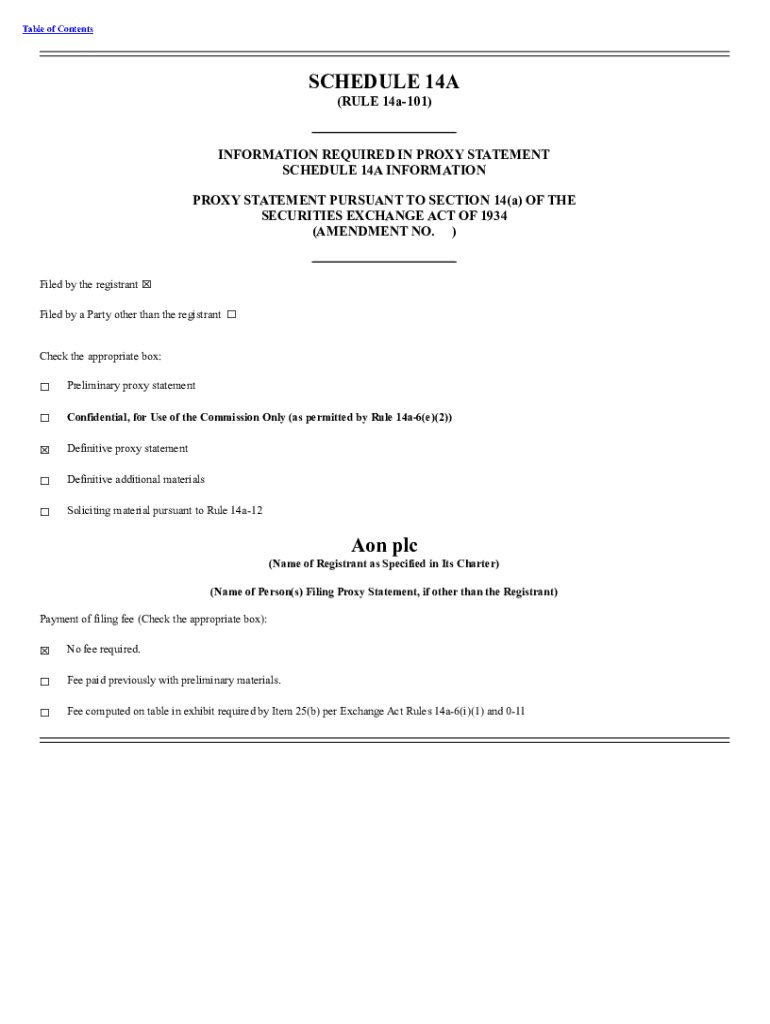How To Read And Interpret A Proxy Statement (Form DEF 14A)

Table of Contents
A proxy statement, also known as a Form DEF 14A, is a document sent by a publicly traded company to its shareholders soliciting their votes on significant corporate matters. It's a critical tool for shareholders to exercise their voting rights and influence the direction of the company. Understanding Form DEF 14A is essential for every investor who wants to actively participate in the governance of the companies they invest in. This article will cover key sections of a proxy statement, how to interpret the information presented, and how to use this knowledge to make informed investment decisions.
Key Sections of a Proxy Statement (Form DEF 14A): A Detailed Breakdown
The proxy statement is a comprehensive document; understanding its structure is the first step toward informed interpretation. Let's delve into its key sections.
The Notice of Meeting
This section provides essential logistical details about the shareholder meeting, including:
- Date and Time: The specific date and time of the shareholder meeting.
- Location: The physical location (or virtual meeting details) where the meeting will be held.
- Matters to be Voted Upon: A summary of the proposals shareholders will be voting on. This is crucial as it sets the agenda for the meeting and highlights the key decisions to be made.
The Proposal(s): Understanding the Items Up for Vote
This section details the matters requiring shareholder votes. Proposals commonly include:
- Election of Directors: Shareholders vote to elect members to the board of directors. This section usually includes biographical information on each nominee, their qualifications, and any potential conflicts of interest.
- Executive Compensation: This part outlines the compensation packages for senior executives, including salaries, bonuses, stock options, and other benefits. Careful review is vital for assessing alignment of executive pay with company performance.
- Shareholder Proposals: These proposals are submitted by shareholders themselves and can address a wide range of topics, from environmental sustainability to social responsibility initiatives.
For each proposal, look for:
- Description: A clear and concise explanation of the proposal's purpose.
- Recommendation: The board of directors' recommendation on how shareholders should vote on the proposal.
- Background: Relevant context and reasoning behind the proposal, providing crucial information for your decision-making process. Understanding the background helps you assess the proposal's merits and implications for the company's future.
Information on the Board of Directors
This section profiles the individuals overseeing the company. Key information to look for includes:
- Background and Qualifications: Review each director's professional experience, expertise, and relevant skills to assess their suitability for the board.
- Compensation: The compensation received by each director.
- Independence: Identify independent directors, those free from any material relationship with the company or its management, as they provide an unbiased perspective on corporate decisions. Look for statements explicitly confirming independence. Independent directors are crucial for sound corporate governance.
Executive Compensation
Understanding executive compensation is crucial for evaluating corporate governance and aligning executive interests with shareholder value. This section will detail:
- Salaries, Bonuses, and Stock Options: A breakdown of the various components making up executive compensation.
- Compensation Tables: These tables usually offer a clear comparison of executive pay across different years and against industry benchmarks. Examine the trends to understand the relationship between executive pay and company performance.
- Executive Pay Ratio: This compares the CEO's compensation to the median employee's compensation, offering a measure of pay equity.
Audit Report and Financial Statements
These sections provide an overview of the company's financial health.
- Audit Report: The independent auditor's assessment of the accuracy and fairness of the company's financial statements.
- Financial Statements: These statements, including the balance sheet, income statement, and cash flow statement, provide a detailed picture of the company's financial position. Reviewing these helps assess the company's financial health and stability.
How to Interpret the Information in a Proxy Statement (Form DEF 14A)
The information in a proxy statement needs careful analysis to inform your voting decisions.
Analyzing the Proposals
Critically evaluate each proposal based on:
- Merits: Weigh the potential benefits and drawbacks of each proposal, considering their short-term and long-term implications.
- Alignment with Company Strategy: Assess whether the proposal aligns with the company's overall strategic goals and long-term vision.
- Impact on Shareholder Value: Consider how the proposal may affect shareholder value.
Understanding the Company's Perspective
The company's recommendations on each proposal are crucial. Pay attention to:
- Reasoning: Understand the rationale behind the company's recommendations. This will offer insights into management's thinking and strategic priorities.
- Potential Biases: Be aware that the company's perspective might be influenced by its own self-interest. Consider this when evaluating their recommendations.
Identifying Potential Conflicts of Interest
Scrutinize the document for potential conflicts of interest:
- Related-Party Transactions: Carefully review any transactions between the company and its directors, officers, or related parties. These require close scrutiny to ensure fairness and transparency.
- Independent Directors' Opinions: Pay close attention to the opinions and recommendations of independent directors, as they offer a valuable counterpoint to management's perspective.
Conclusion: Mastering Proxy Statements for Informed Investment Decisions
Understanding proxy statements (Form DEF 14A) is an essential skill for every investor. By carefully reviewing the key sections—the notice of meeting, proposals, information on the board of directors, executive compensation, and the audit report and financial statements—you can make informed voting decisions and actively participate in corporate governance. Remember to analyze the proposals, understand the company's perspective, and identify potential conflicts of interest. Become a more informed investor by mastering the art of reading and interpreting proxy statements (Form DEF 14A). Use this guide as your starting point and take control of your investment decisions. Active shareholder engagement, facilitated by understanding proxy statements, is key to promoting good corporate governance and maximizing shareholder value.

Featured Posts
-
 Tigers Vs Mariners Mlb Game Prediction Picks And Betting Odds
May 17, 2025
Tigers Vs Mariners Mlb Game Prediction Picks And Betting Odds
May 17, 2025 -
 Cinema Con 2025 Key Highlights From The Warner Bros Pictures Presentation
May 17, 2025
Cinema Con 2025 Key Highlights From The Warner Bros Pictures Presentation
May 17, 2025 -
 1 Thing Holding Back Each Top Nba Contender
May 17, 2025
1 Thing Holding Back Each Top Nba Contender
May 17, 2025 -
 Top Rated Online Casinos In New Zealand For Real Money In 2024
May 17, 2025
Top Rated Online Casinos In New Zealand For Real Money In 2024
May 17, 2025 -
 Investing In Growth Identifying The Countrys Emerging Business Centers
May 17, 2025
Investing In Growth Identifying The Countrys Emerging Business Centers
May 17, 2025
